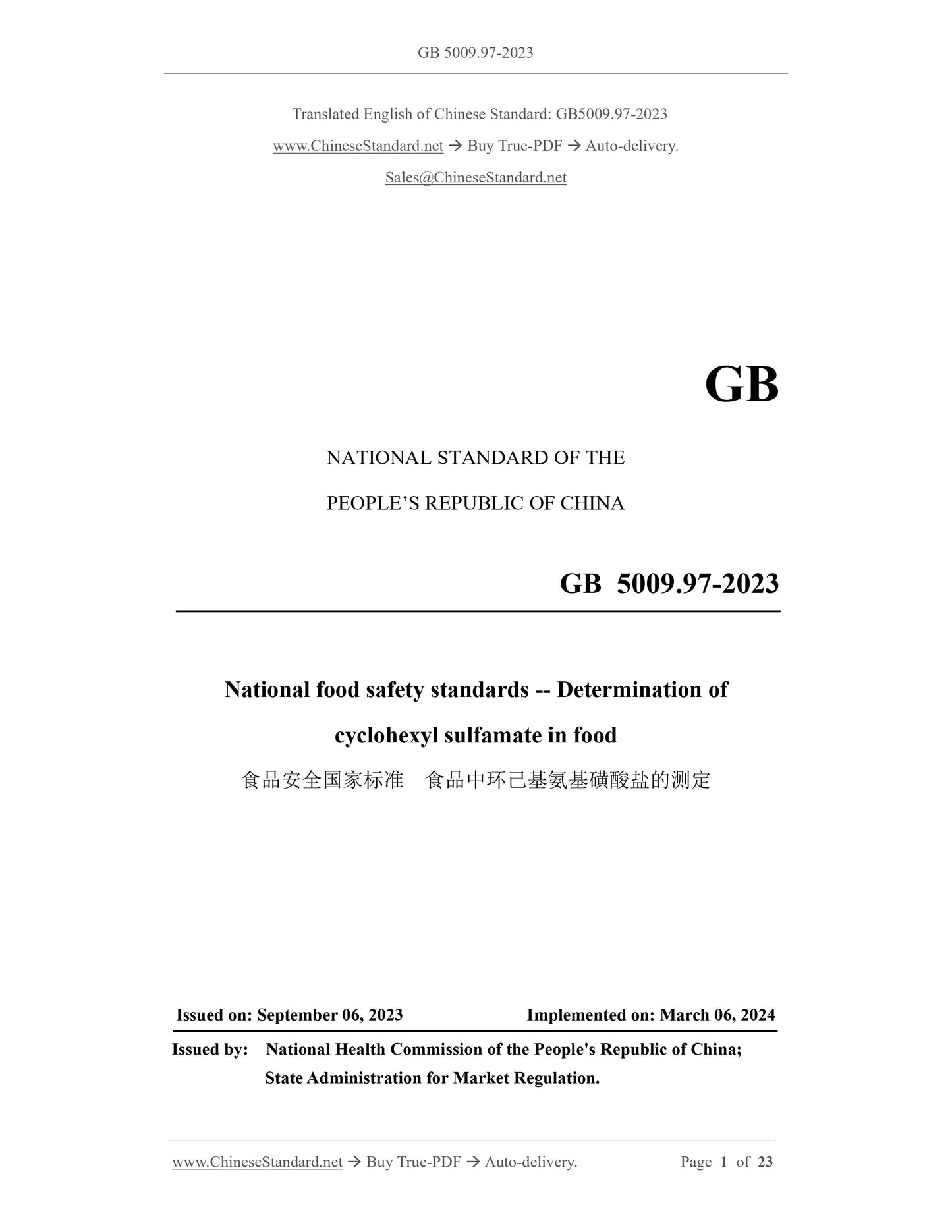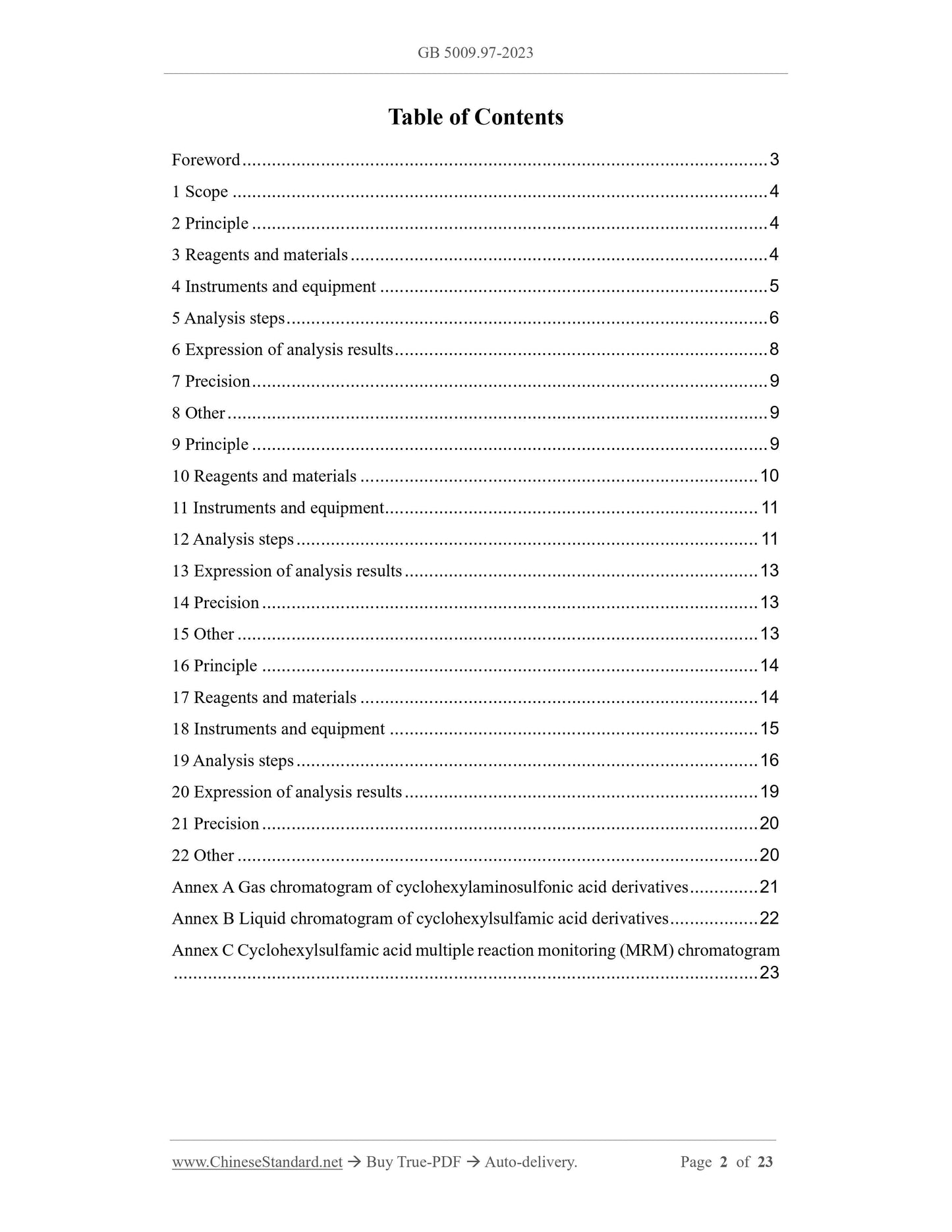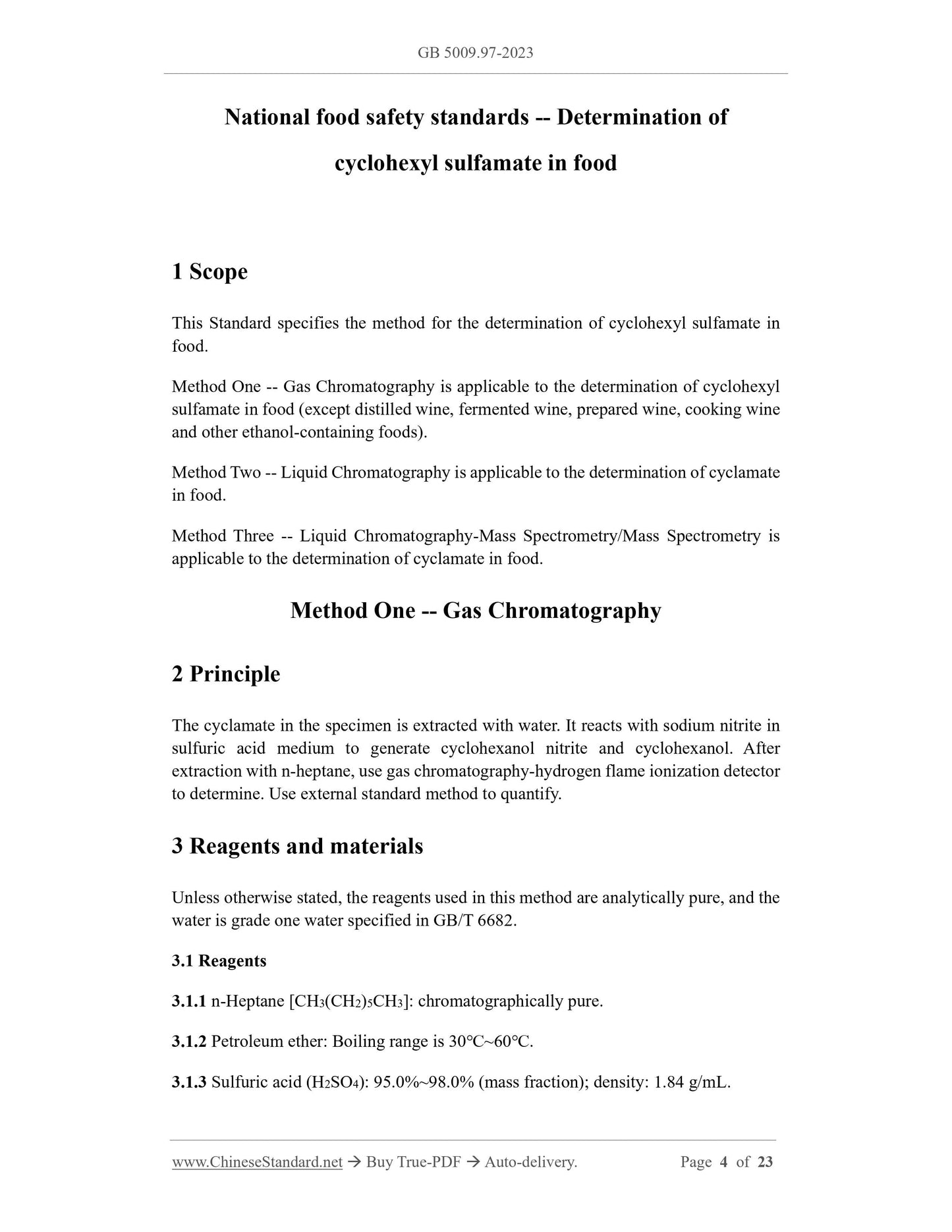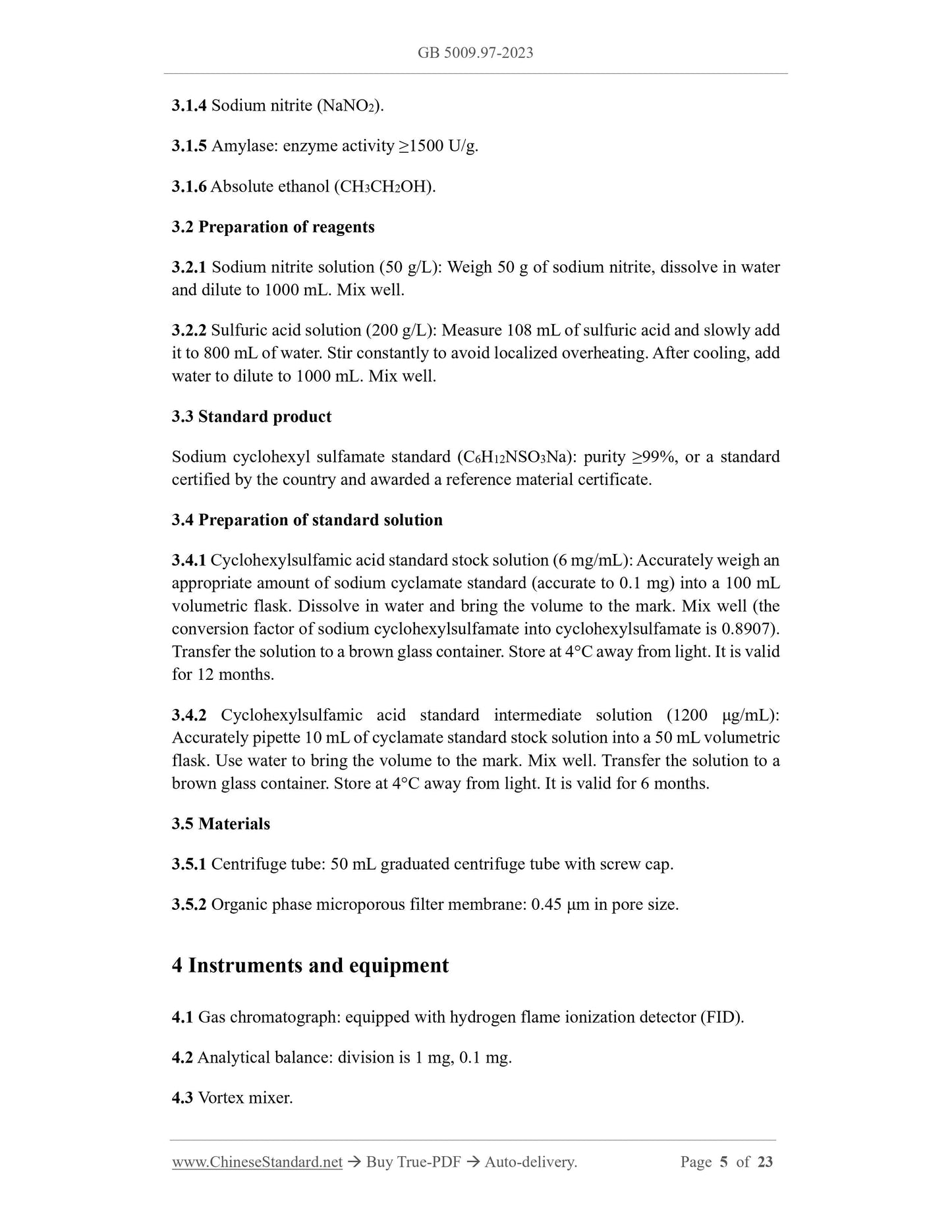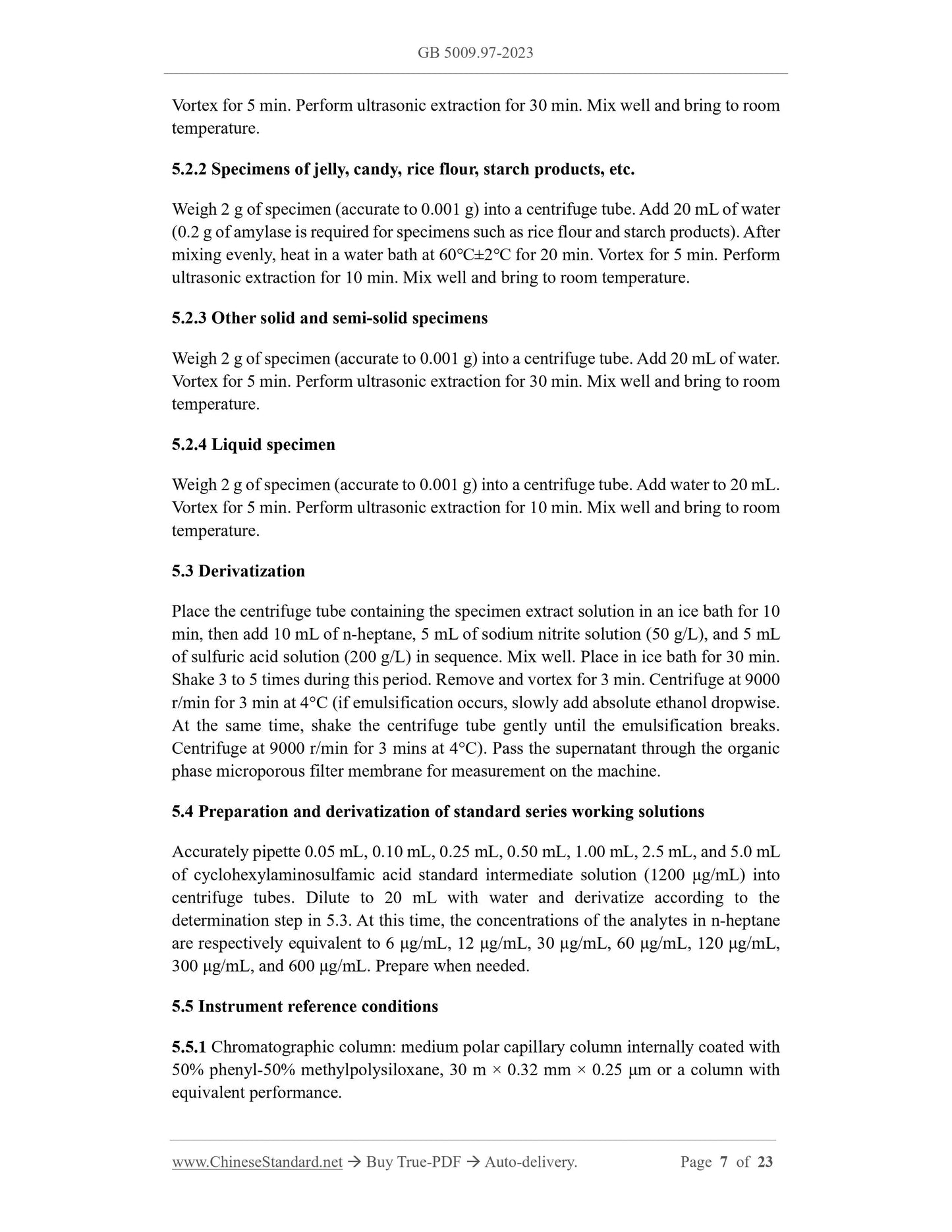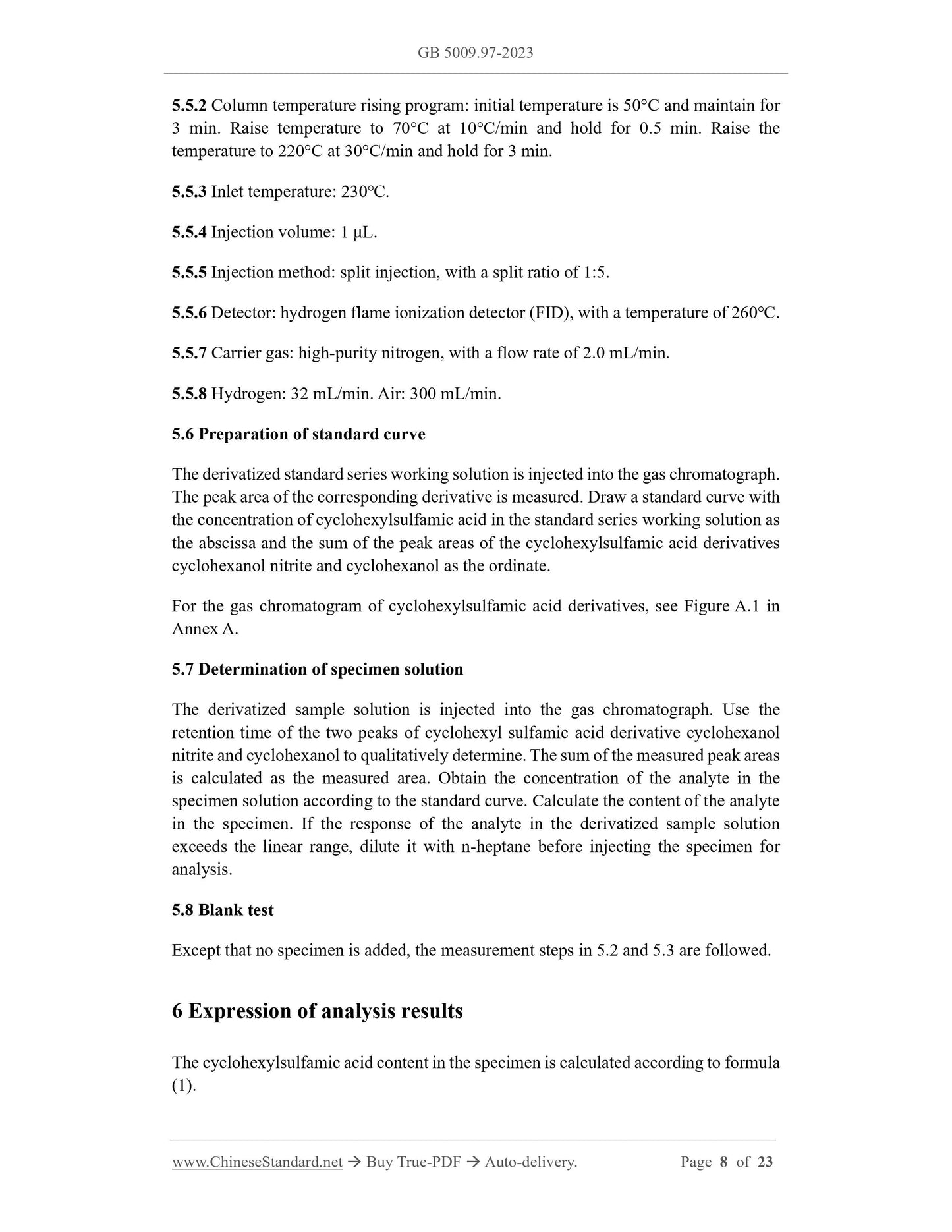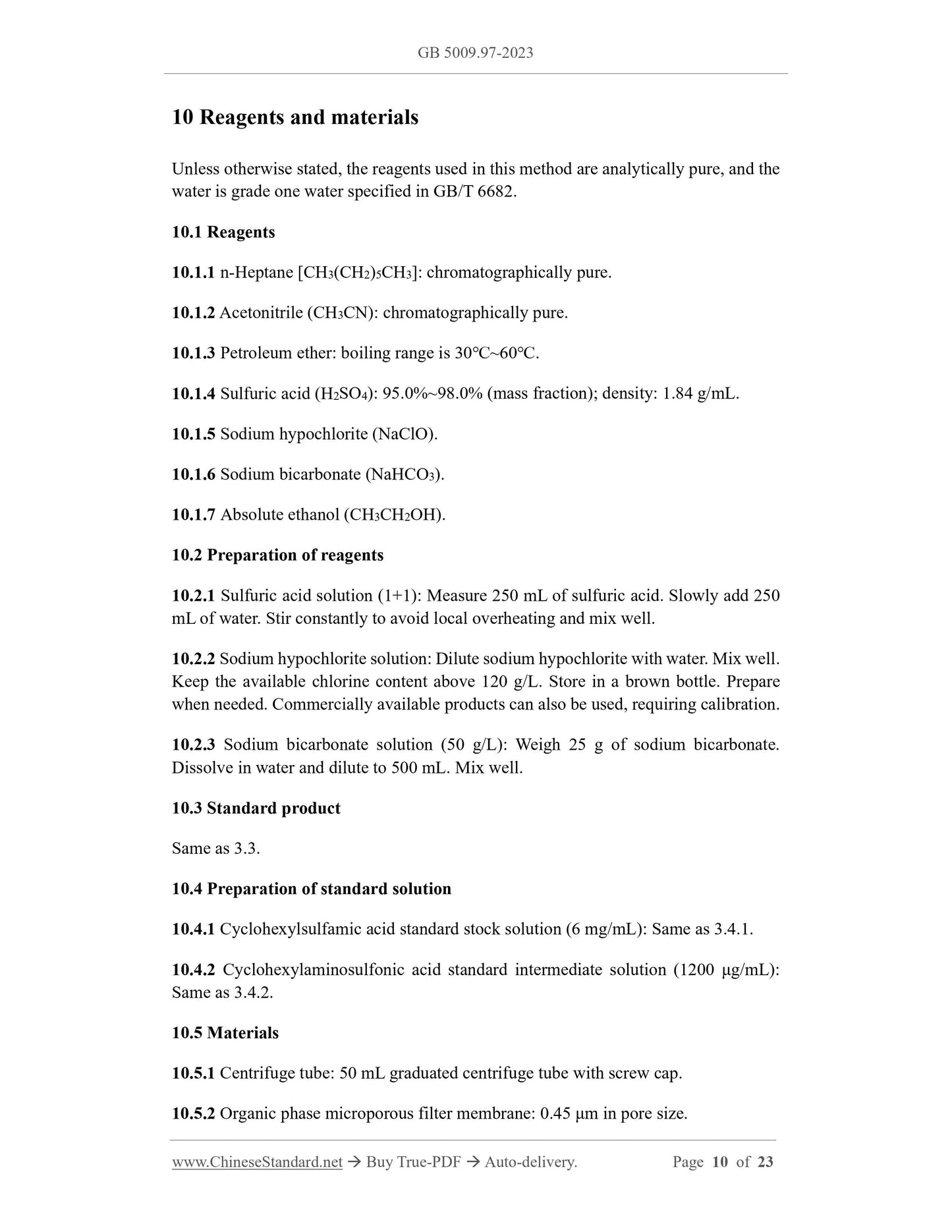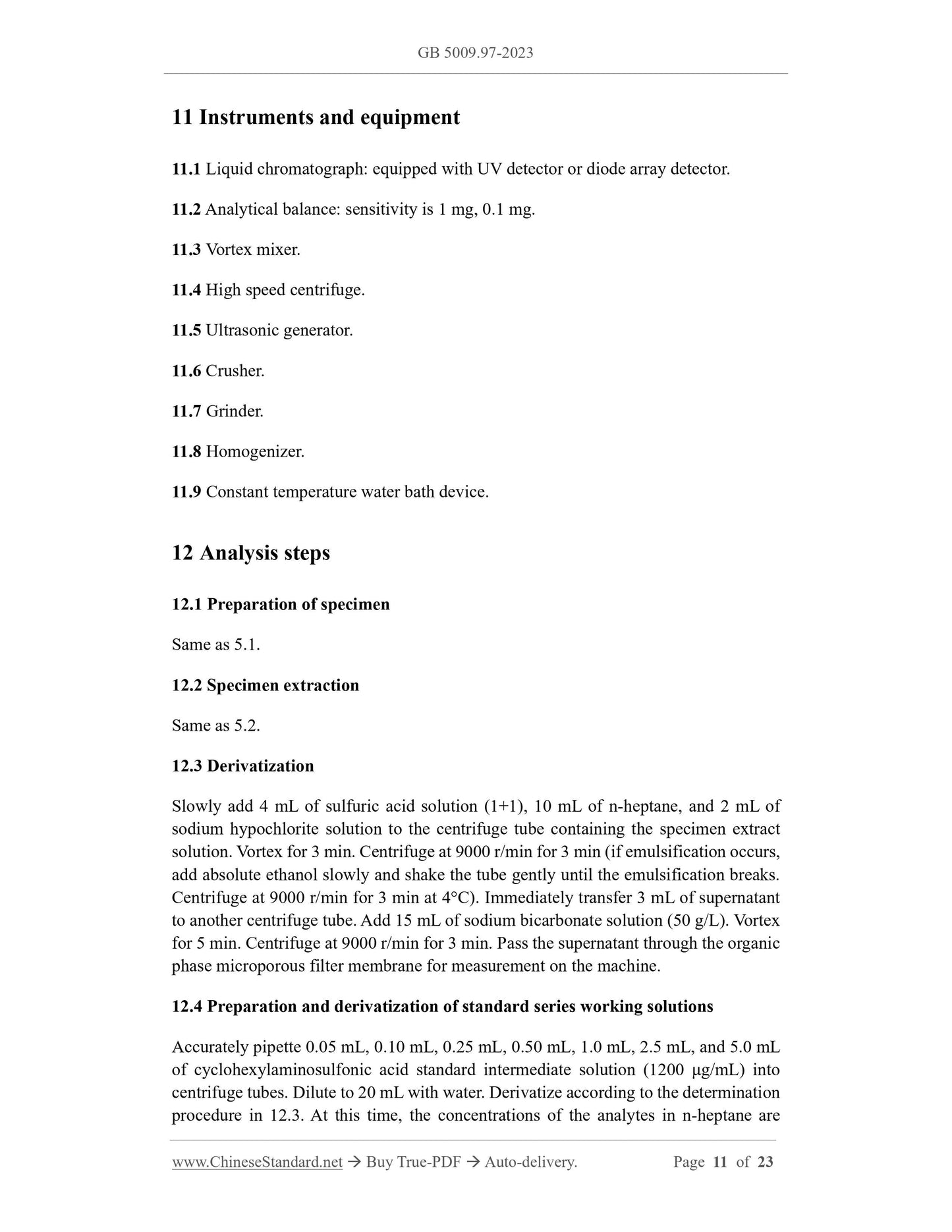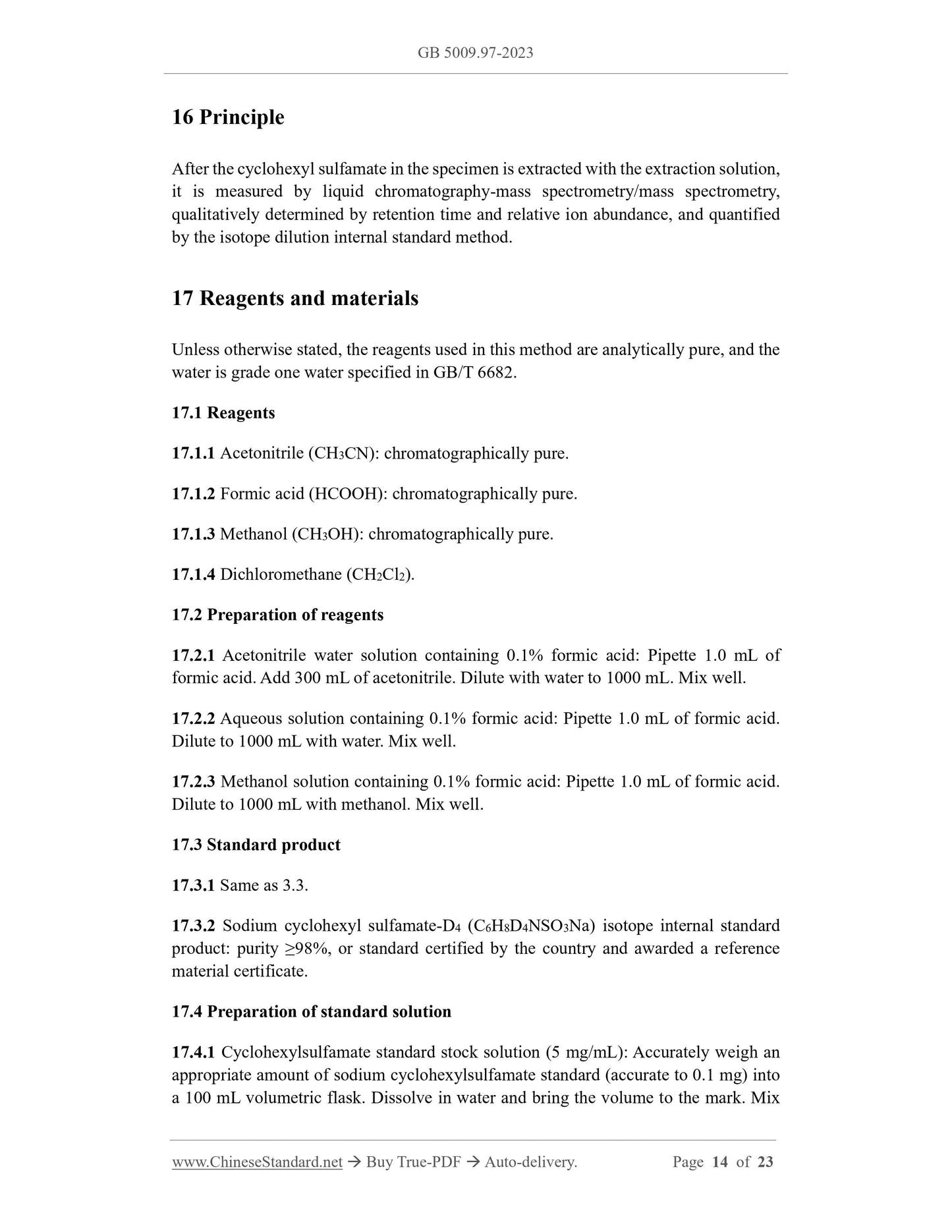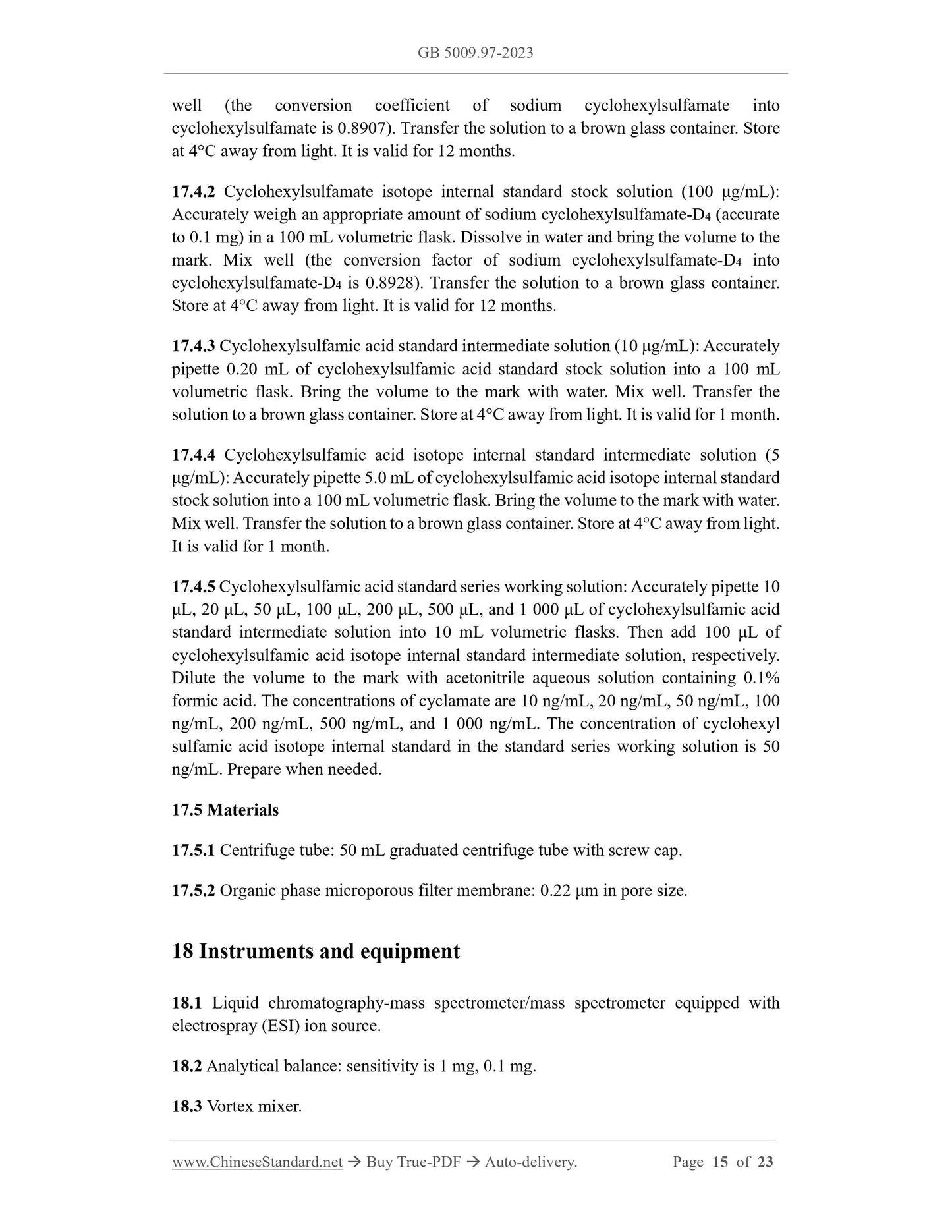1
/
of
10
www.ChineseStandard.us -- Field Test Asia Pte. Ltd.
GB 5009.97-2023 English PDF
GB 5009.97-2023 English PDF
Regular price
$260.00
Regular price
Sale price
$260.00
Unit price
/
per
Shipping calculated at checkout.
Couldn't load pickup availability
GB 5009.97-2023: National food safety standard - Determination of sodium cyclamate in foods
Delivery: 9 seconds. Download (and Email) true-PDF + Invoice.Get Quotation: Click GB 5009.97-2023 (Self-service in 1-minute)
Newer / historical versions: GB 5009.97-2023
Preview True-PDF
Scope
This Standard specifies the method for the determination of cyclohexyl sulfamate infood.
Method One -- Gas Chromatography is applicable to the determination of cyclohexyl
sulfamate in food (except distilled wine, fermented wine, prepared wine, cooking wine
and other ethanol-containing foods).
Method Two -- Liquid Chromatography is applicable to the determination of cyclamate
in food.
Method Three -- Liquid Chromatography-Mass Spectrometry/Mass Spectrometry is
applicable to the determination of cyclamate in food.
Method One -- Gas Chromatography
Basic Data
| Standard ID | GB 5009.97-2023 (GB5009.97-2023) |
| Description (Translated English) | National food safety standard - Determination of inositol in foods |
| Sector / Industry | National Standard |
| Classification of Chinese Standard | X09 |
| Word Count Estimation | 14,124 |
| Date of Issue | 2023-09-06 |
| Date of Implementation | 2024-03-06 |
| Issuing agency(ies) | National Health Commission of the People's Republic of China, State Administration for Market Regulation |
| Summary | This standard specifies the method for the determination of myo-inositol (myo-inositol) in food. The first gas chromatography method is suitable for the determination of myo-inositol in infant formulas, formulas for special medical purposes, milk and dairy products, and beverages. The second microbiological method is suitable for the determination of myo-inositol in food. |
Share
